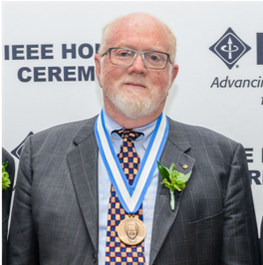UWB Surveillance Radar
Dr. Mark E. Davis – Senior Independent Consultant, USA

Mark E Davis has over 50 years’ experience in Radar technology and systems development. He has held senior management positions in the Defense Advanced Research Projects Agency (DARPA), Air Force Research Laboratory, and General Electric Aerospace. At DARPA, he was the program manager on both the foliage penetration (FOPEN) radar advanced development program and the GeoSAR foliage penetration mapping radar. Dr Davis wrote the text: ”Foliage Penetration Radar – Detection and Characterization of Objects Under Trees”, published by Scitech Raleigh NC in March 2011. A new text on Ultra-Wide Band Surveillance Radar has been published by IET in January 2021, which serves as the reference text for this tutorial.
His education includes a PhD in Physics from The Ohio State University, and Bachelor and Masters Degrees in Electrical Engineering from Syracuse University. He is a Life Fellow of both the IEEE and Military Sensing Symposia. And, he has held positions as IEEE Aerospace Electronics Systems Society President Elect, past member of the AESS Board of Governors, VP Conferences, and past-Chair the Radar Systems Panel. He is the 2011 recipient of the AESS Warren D White Award for Excellence in Radar Engineering, and the 2018 IEEE Dennis J. Pickard Medal for Radar Technologies and Applications.
Tutorial description
Ultra Wide Band Surveillance Radar is an emerging technology for detecting and characterizing targets and cultural features for military and geosciences applications. It is essential to have fine range and cross-range resolution to characterize objects near and under severe clutter. This Lecture is divided into five parts.
- The Early History of Battlefield Surveillance Radar: Battlefield surveillance from manned and unmanned aircraft, along with early experiments in fixed and moving target detection and foliage penetration are covered.
- UWB Phased Array Antenna: Wideband waveforms place a significant demand on the ESA design to maintain gain and sidelobe characteristics. Design of ESA systems with time delay steering and digital beamforming will be illustrated.
- UWB Synthetic Aperture Radar (SAR): A brief description of key UWB surveillance SAR systems will be provided, along with illustrations of the SAR image and fixed object detection capability. Interferometric SAR with multiple channels have provided terrain height measurements and improved detection of moving target detection with UWB waveforms.
- UWB Ground Moving Target Indication: Space Time Adaptive Processing (STAP) has been used for over 20 years for detecting and tracking moving targets in clutter. As the resolution is improved for target characterization, the limits of STAP are tested. This section will discuss an approach for increasing the bandwidth and maintaining geolocation accuracy with Along Track Interferometry.
- New research in Multi-mode Ultra-Wideband Radar, The last section of the lecture will illustrate new technologies that have promise for future multimode operation: simultaneous SAR and GMTI in a multichannel radar.
